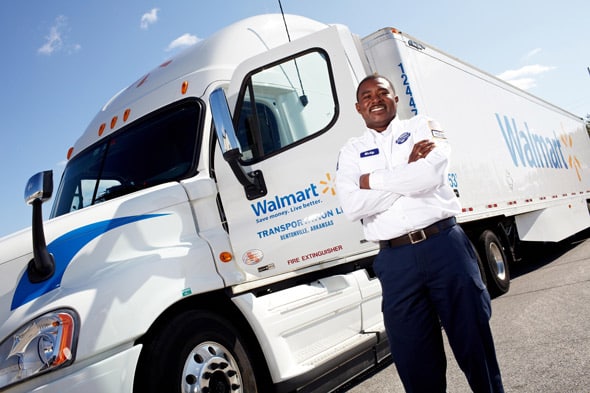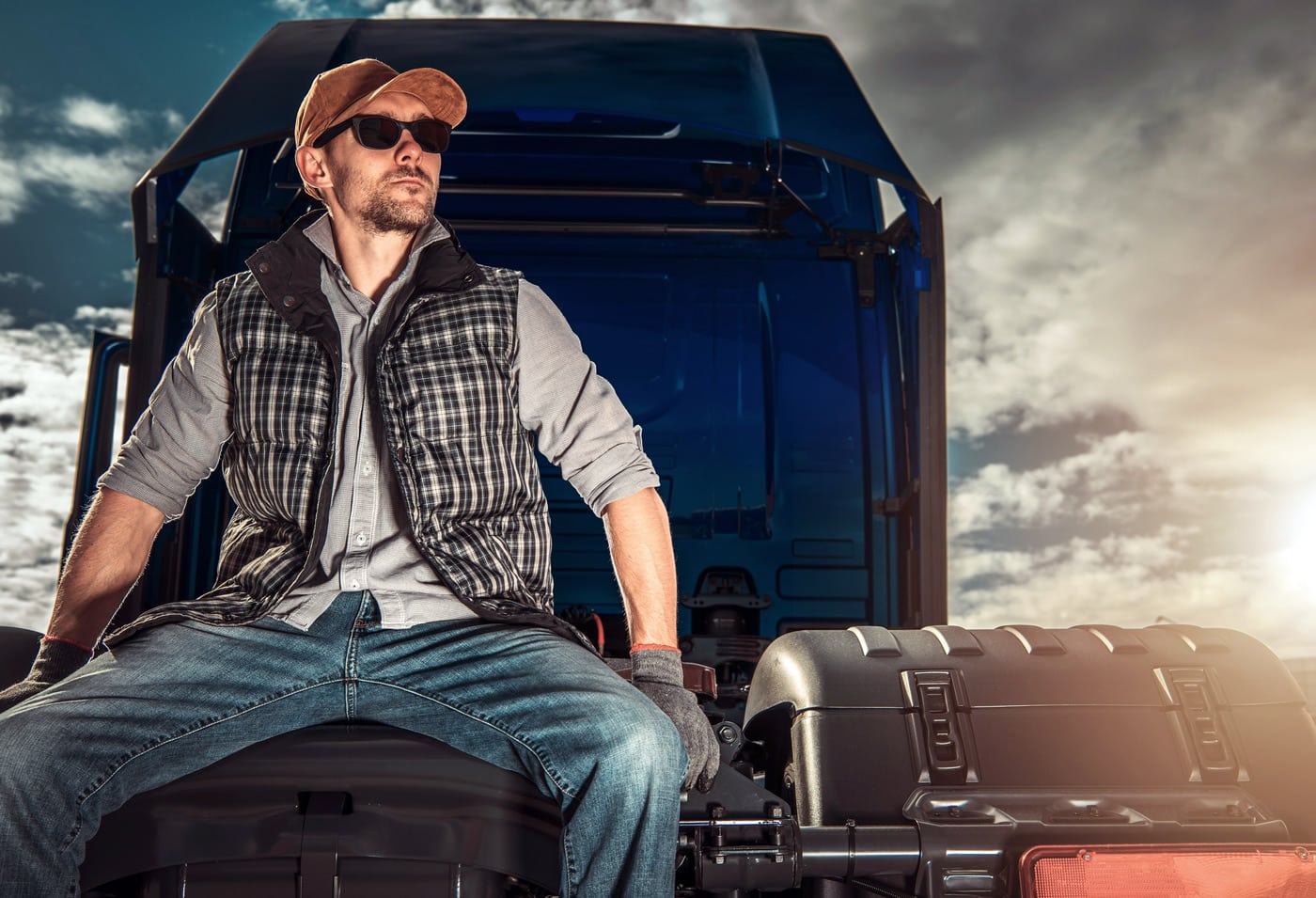Interstate and intrastate trucking have important distinctions. Interstate trucking involves crossing state lines or national borders. Intrastate trucking stays within one state. But there’s more to it than that.
Interstate Trucking
Interstate trucking involves moving goods across state or national borders. This type of transport can include trips between U.S. states, or to Canada and Mexico. Even if a driver only handles part of a multi-state journey, it’s still considered interstate trucking. For example, a truck might only travel within Indiana as part of a larger Chicago to Nashville route, but it’s still an interstate operation.
Intrastate Trucking
Intrastate trucking keeps things local. These operations move freight within a single state’s boundaries. Trucks never cross state lines or national borders. This type of trucking serves local businesses and communities, often with shorter routes and more frequent stops. Drivers might make deliveries to various cities or towns, but always stay within their home state.
Even if a driver never leaves their home state, they may be doing interstate trucking. This happens when the cargo’s full journey goes through multiple states. The route can also affect the classification. A trip between two cities in the same state might go through another state for efficiency. This makes it interstate trucking.
Age limits differ too:
- Interstate: 21+ years old
- Intrastate: As young as 18 in some states
Insurance needs vary as well. Interstate trucking often has stricter rules. Drivers must know these nuances to follow the right regulations.
Different Trucks for Long-Distance and Local Hauling
Different trucks suit various hauling needs. Local carriers often use box trucks, garbage trucks, and dump trucks. They also employ concrete mixers, bucket trucks, and tow trucks for specific jobs.
Long-distance haulers typically rely on:
- Refrigerated (reefer) trucks
- Tanker trucks
- Flatbed trucks
- Semi-trucks and tractor-trailers
These larger vehicles are built for extended trips and heavy loads.
Insurance Coverage Requirements
Long-Distance Hauling
Trucks that cross state lines need specific insurance. The FMCSA sets these rules. The amount depends on what’s being moved and how heavy the truck is.
- Small trucks under 10,001 pounds with normal goods: $300,000
- Big trucks over 10,001 pounds with normal goods: $750,000
- Any truck with dangerous items: $5 million
- Trucks carrying oil: $1 million
These are just the lowest amounts allowed. Many companies ask for $1 million coverage, even for safe items.
In-State Trucking
Rules for trucks that stay in one state change depending on where you are. Some places copy the FMCSA rules. Others make their own.
For example:
- California and Colorado use FMCSA rules
- Florida has its own system:
- $50,000 to $300,000 for safe items
- Amount changes based on truck weight
It’s important to check local rules. They can be very different from place to place.
Truck Company Permits
Long-Distance Hauling
Long-distance trucking across state lines requires special permits. Truckers need a USDOT number from the federal government. This number lets them work in different states. Some areas near big cities that touch multiple states are exceptions. These special zones don’t always need the same permits for trucks crossing state lines.
In-State Transport
Trucking within one state often has simpler rules. Many states don’t ask for federal permits for in-state work. But about half the states have their own permits. The rules change from state to state. Truck companies should check local laws. They might need special papers to work, even if they stay in one state.
Truck companies must know these rules. The right permits keep their business legal. It helps them avoid fines and keeps their trucks on the road.
Unified Carrier Registration
Interstate carriers must sign up for the Unified Carrier Registration (UCR) program. This rule applies even if a carrier’s home state does not take part. Right now, 41 states join in the UCR system. All interstate carriers need to register, no matter where they are based. The UCR Act set up this program to keep track of carriers that work across state lines.
Fuel Tax Compliance for Truckers
IFTA and IRP simplify fuel tax payments for truckers. These agreements let carriers pay taxes in their home state for all states they drive through. This saves time and paperwork.
But some states still need their own permits for in-state trips. These include:
- Connecticut
- Indiana
- Kentucky
- Maine
- North Carolina
- Pennsylvania
- Utah
- West Virginia
Drivers who mostly stay in one state can get short-term permits for out-of-state trips. This works instead of signing up for IFTA and IRP. It’s a good choice for local truckers who rarely cross state lines.
Common Rules for All Trucking Operations
Interstate and intrastate trucking share key rules.
All carriers need CDLs for their drivers. Regular drug and alcohol testing is a must. Proper insurance coverage is required too. Carriers moving hazardous materials need special certification. They must also check that drivers can handle big rigs safely. Following state and federal laws is crucial for all trucking companies. These shared rules help keep roads safe for everyone.
Frequently Asked Questions
Pay Differences for Interstate and Intrastate Trucking
Interstate truckers often earn more than intrastate drivers. Long-haul routes across state lines usually pay higher rates. Intrastate drivers have shorter trips and lower pay, but more home time. Pay varies based on experience, route type, and cargo.
Determining Operating Authority Needs
Your operating area decides if you need interstate or intrastate authority. Crossing state lines requires interstate authority from the FMCSA. Staying within one state needs intrastate authority from that state’s agency. Check your planned routes to choose the right authority.
CDL Requirements: Interstate vs Intrastate in California
Interstate CDLs in California need:
- Age 21+
- DOT medical exam
- Skills and knowledge tests
- Clean driving record
Intrastate CDLs allow:
- Age 18+
- Driving only in California
- Less strict medical rules
Both types require passing written and driving tests.
Changing CDL from Intrastate to Interstate
To change your CDL:
- Meet age and health requirements
- Pass the federal medical exam
- Submit new application to DMV
- Take extra tests if needed
- Pay required fees
- Get new license with interstate status
Non-Excepted Interstate vs Intrastate CDL Classes
Non-excepted interstate:
- Can cross state lines
- Follows federal rules
- Needs medical certificate
Non-excepted intrastate:
- Stays in one state
- Follows state rules
- May have different health rules
Both types involve commerce and need a CDL.
Defining Interstate Freight Carriers
Interstate carriers transport goods:
- Across state lines
- Between states and other countries
- Within one state, but as part of a larger interstate shipment
Examples of interstate commerce:
- Goods from California to New York
- Packages from Mexico to Texas
- In-state delivery of items from another country
Locate and Secure More Profitable Freight Loads
Truckers can use online load boards to find and book well-paying freight jobs quickly. These platforms let drivers search for loads that fit their equipment and preferred routes. Carriers can filter by truck type, cargo weight, and pickup/delivery locations to find ideal matches.
Many load boards offer loads from trusted brokers, giving drivers peace of mind. Some even allow instant booking and quick rate confirmations. This saves time and helps truckers maximize their earning potential. Load boards make it easy for drivers to keep their trucks full and stay profitable, whether hauling within one state or across the country.







